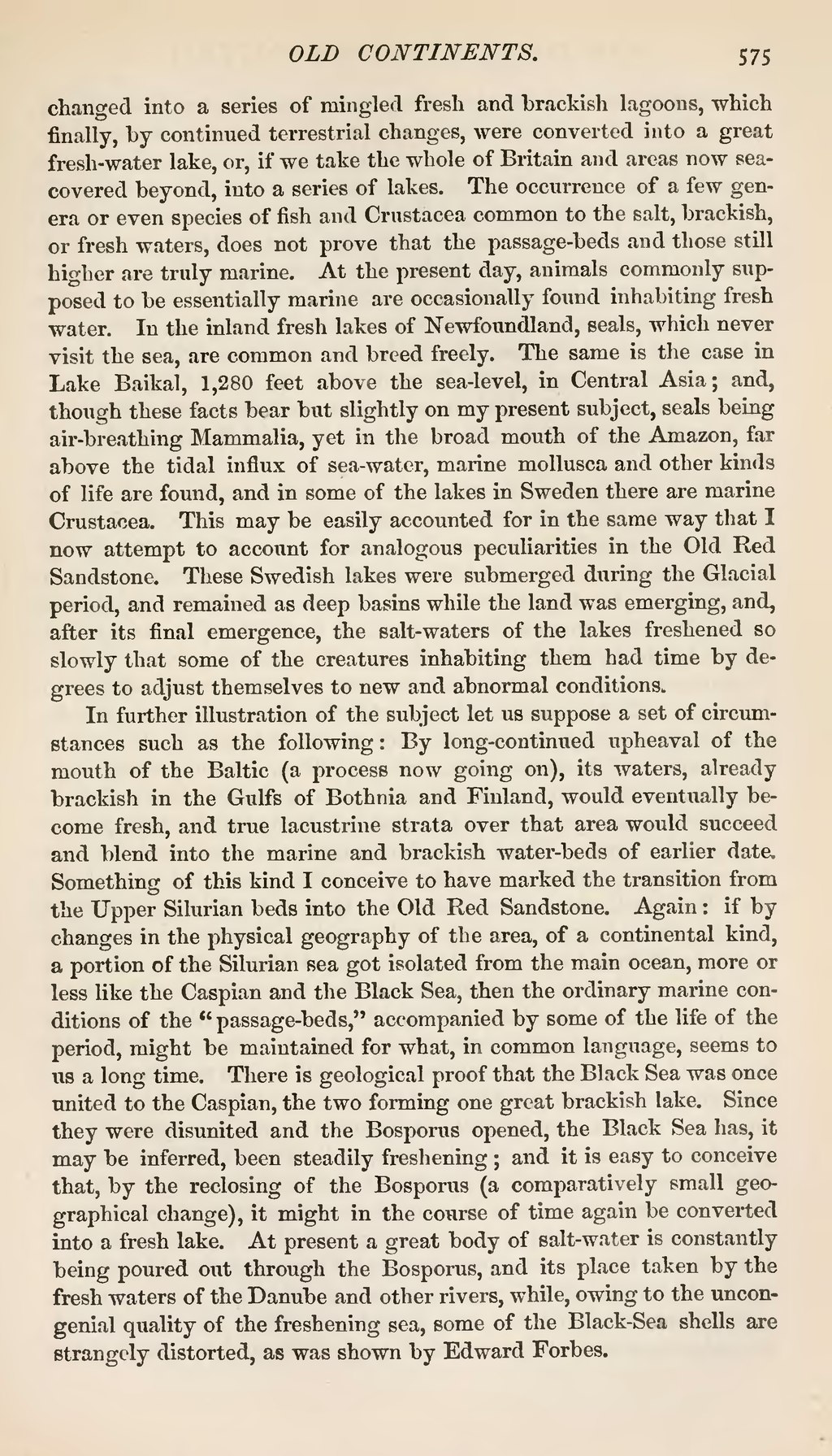changed into a series of mingled fresh and brackish lagoons, which finally, by continued terrestrial changes, were converted into a great fresh-water lake, or, if we take the whole of Britain and areas now sea-covered beyond, into a series of lakes. The occurrence of a few genera or even species of fish and Crustacea common to the salt, brackish, or fresh waters, does not prove that the passage-beds and those still higher are truly marine. At the present day, animals commonly supposed to be essentially marine are occasionally found inhabiting fresh water. In the inland fresh lakes of Newfoundland, seals, which never visit the sea, are common and breed freely. The same is the case in Lake Baikal, 1,280 feet above the sea-level, in Central Asia; and, though these facts bear but slightly on my present subject, seals being air-breathing Mammalia, yet in the broad mouth of the Amazon, far above the tidal influx of sea-water, marine mollusca and other kinds of life are found, and in some of the lakes in Sweden there are marine Crustacea. This may be easily accounted for in the same way that I now attempt to account for analogous peculiarities in the Old Red Sandstone. These Swedish lakes were submerged during the Glacial period, and remained as deep basins while the land was emerging, and, after its final emergence, the salt-waters of the lakes freshened so slowly that some of the creatures inhabiting them had time by degrees to adjust themselves to new and abnormal conditions.
In further illustration of the subject let us suppose a set of circumstances such as the following: By long-continued upheaval of the mouth of the Baltic (a process now going on), its waters, already brackish in the Gulfs of Bothnia and Finland, would eventually become fresh, and true lacustrine strata over that area would succeed and blend into the marine and brackish water-beds of earlier date. Something of this kind I conceive to have marked the transition from the Upper Silurian beds into the Old Red Sandstone. Again: if by changes in the physical geography of the area, of a continental kind, a portion of the Silurian sea got isolated from the main ocean, more or less like the Caspian and the Black Sea, then the ordinary marine conditions of the "passage-beds," accompanied by some of the life of the period, might be maintained for what, in common language, seems to us a long time. There is geological proof that the Black Sea was once united to the Caspian, the two forming one great brackish lake. Since they were disunited and the Bosporus opened, the Black Sea has, it may be inferred, been steadily freshening; and it is easy to conceive that, by the reclosing of the Bosporus (a comparatively small geographical change), it might in the course of time again be converted into a fresh lake. At present a great body of salt-water is constantly being poured out through the Bosporus, and its place taken by the fresh waters of the Danube and other rivers, while, owing to the uncongenial quality of the freshening sea, some of the Black-Sea shells are strangely distorted, as was shown by Edward Forbes.

